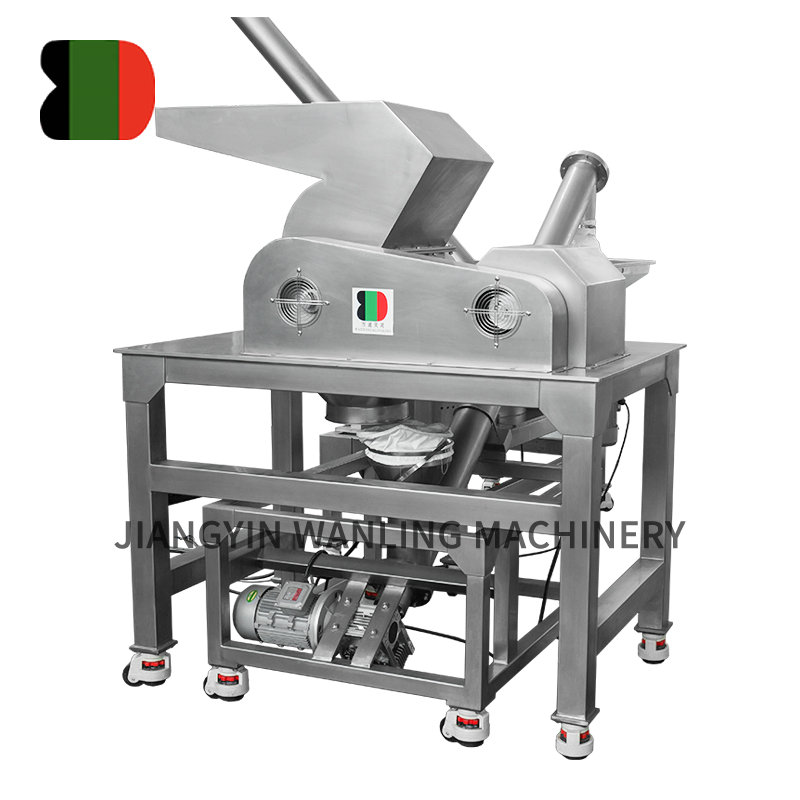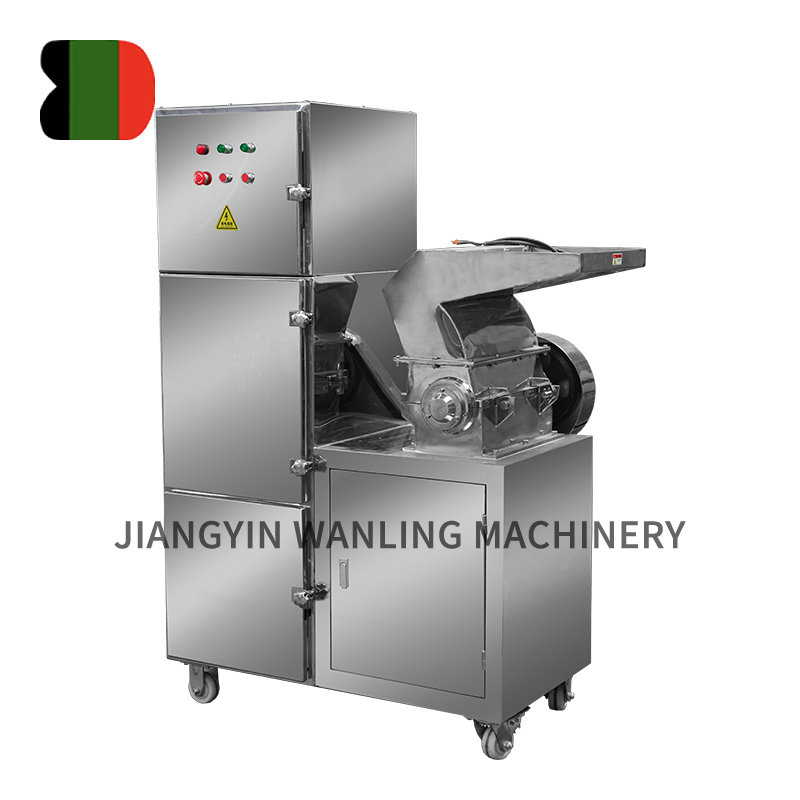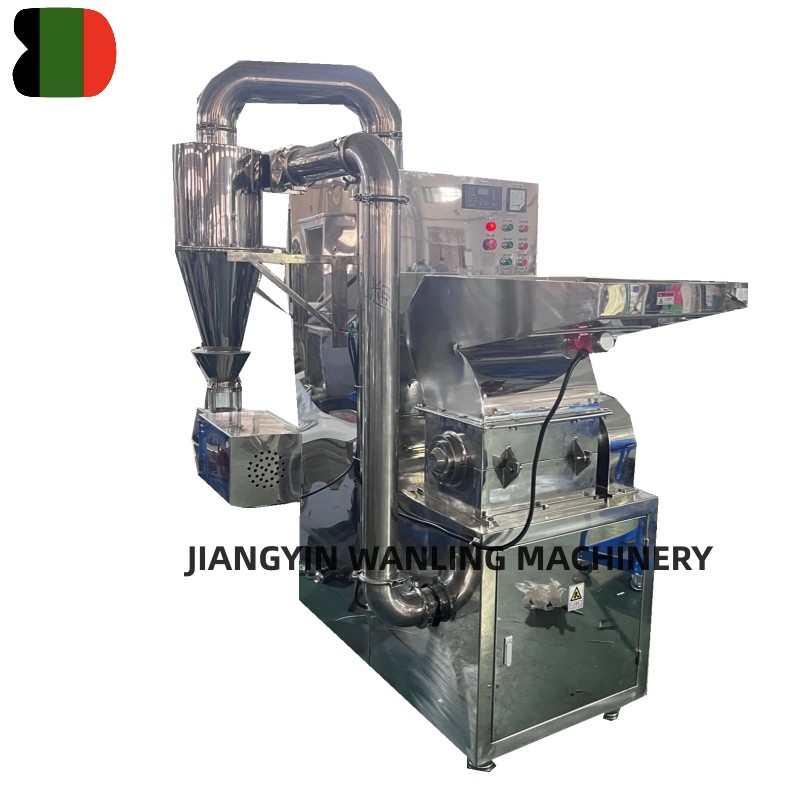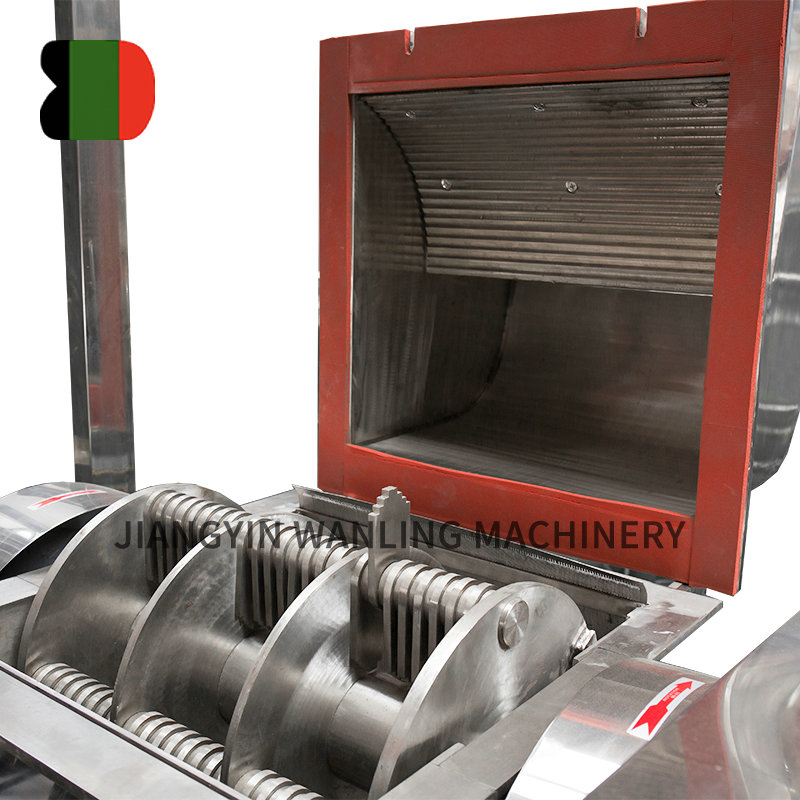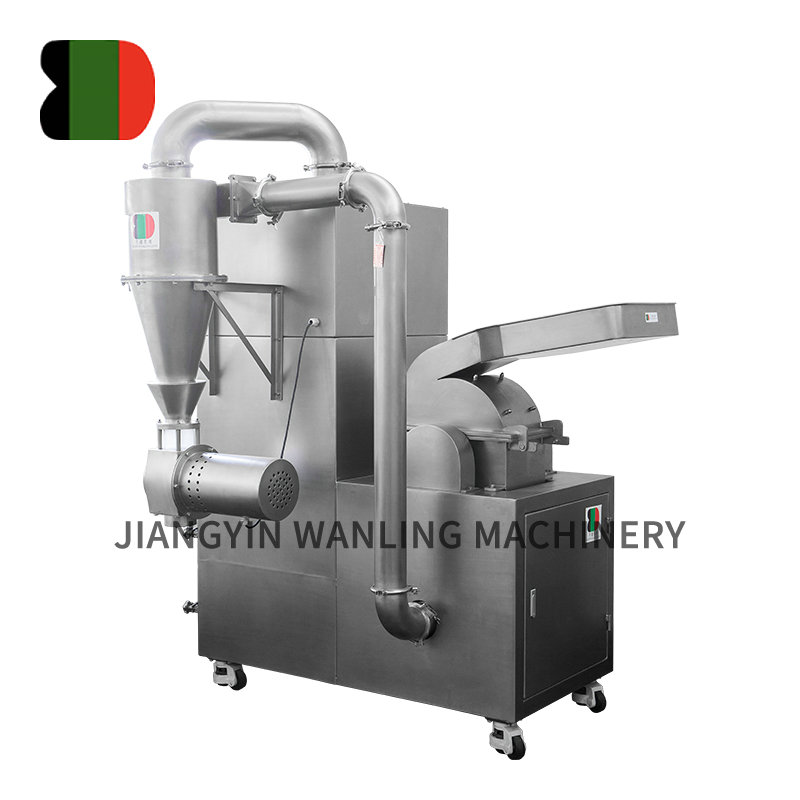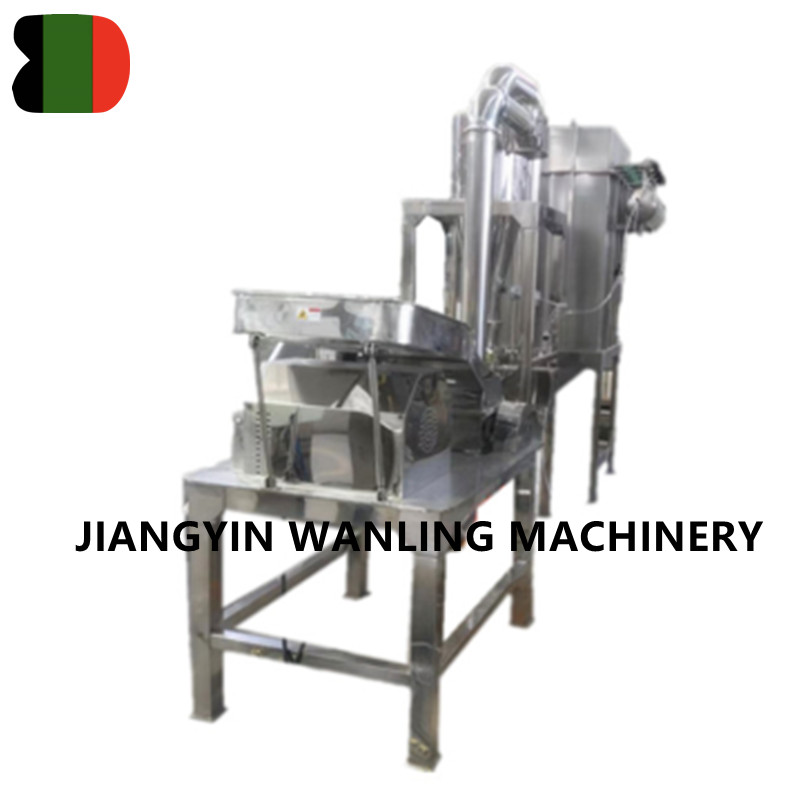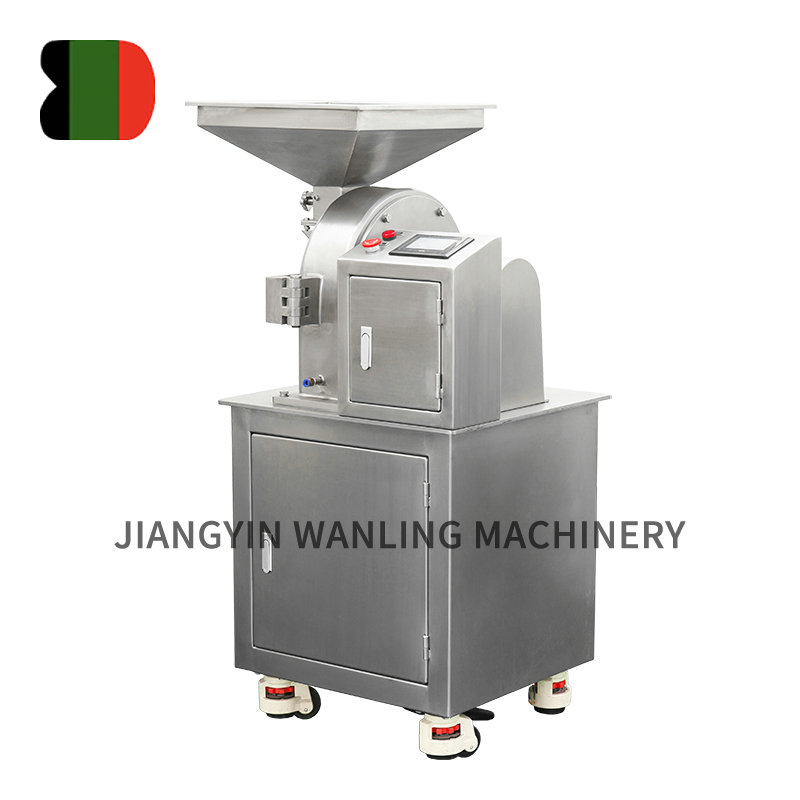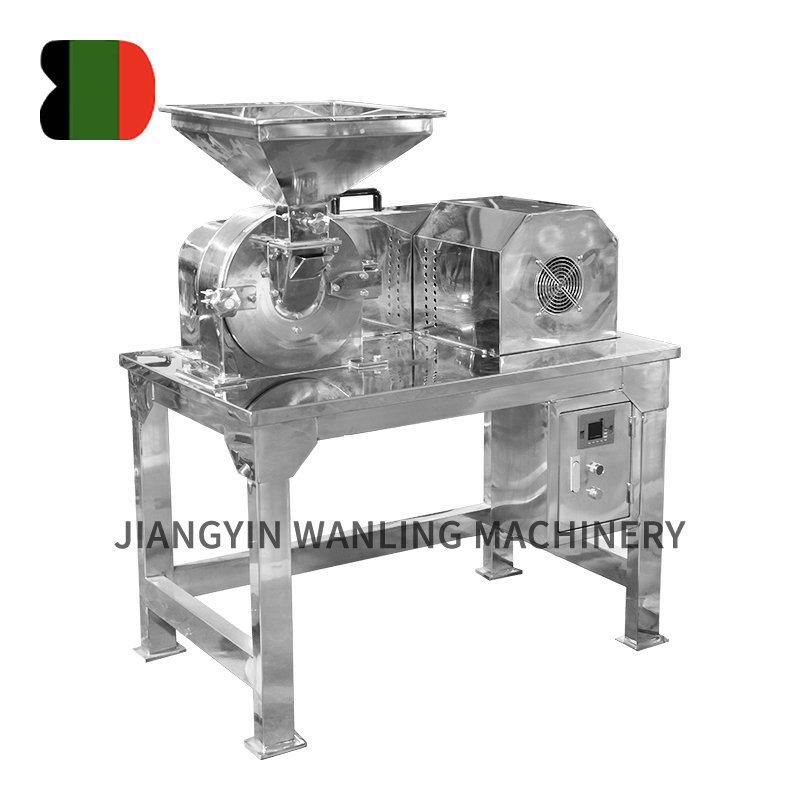The air classifier mill achieves precise particle size distribution through a combination of mechanical grinding and air classification processes. Here’s how it works and why this precision is important in industries like pharmaceuticals and food processing:
Mechanism of Particle Size Control
Grinding: In an air classifier mill, material is initially fed into a grinding chamber, where it is subjected to high-speed mechanical forces (typically from a rotating rotor). The grinding action reduces the material into smaller particles. The finer particles are then separated from larger ones using air currents.
Air Classification: After grinding, the material enters a classifying zone where an airflow (generated by a fan or blower) is used to separate the particles based on size. The air classifier typically has a rotating classifier wheel or sieve that sets a cut-off size for the particles. Smaller, lighter particles are carried away by the airflow, while larger, heavier particles are retained and sent back for further grinding.
Adjustable Classification: The precision of the air classifier mill is largely due to the ability to adjust the airflow speed and the classifier wheel speed. By fine-tuning these parameters, operators can control the cut-off point, ensuring that only particles within a desired size range are collected, while others are re-ground.
Importance of Particle Size Distribution in Pharmaceuticals
Bioavailability: In pharmaceutical applications, particle size directly affects the bioavailability of drugs. Finer particles have a larger surface area, which can enhance the solubility and absorption of drugs in the body. Consistent particle size distribution ensures that the drug's performance is predictable and meets regulatory standards.
Dosing Accuracy: Accurate particle size control ensures uniformity in the formulation of pharmaceutical powders, which is critical for precise dosing. Variations in particle size could lead to inconsistencies in drug concentration, affecting the efficacy and safety of the medication.
Processing Efficiency: Many pharmaceutical processes, such as tablet compression or capsule filling, require uniform particle sizes to ensure consistent flowability, homogeneity, and compaction. An air classifier mill helps achieve this consistency, reducing defects during production.

Importance of Particle Size Distribution in Food Processing
Texture and Quality: In the food industry, particle size affects the texture, mouthfeel, and consistency of products. For example, in powdered food products (such as spices, flour, or sweeteners), particle size influences the taste release and dissolving properties. A uniform particle size distribution ensures a consistent texture in the final product.
Powder Flowability: The flowability of powders is crucial in food processing, especially in automated processes. Uniform particle sizes ensure that the powder flows smoothly during mixing, packaging, and transportation, preventing clumping and ensuring even dispersion in recipes.
Enhanced Processing: Certain food applications, such as coating or emulsifying, require a specific particle size to achieve optimal results. For example, in the production of instant beverages or powdered soups, the powder needs to dissolve quickly and uniformly in water, which is influenced by particle size.
Stability and Shelf Life: Finer particles have a larger surface area, which can lead to increased surface interactions with moisture and air. In some cases, controlling the particle size distribution helps enhance the stability of food products, preventing clumping, spoilage, or loss of flavor.
Control Over Particle Size Distribution
Cut Point Adjustment: Air classifier mills allow for precise control over the particle size distribution through adjustments to the classifier wheel speed and airflow. By controlling these parameters, the mill can separate finer particles from coarser ones with high accuracy, creating products with a narrow and controlled particle size range.
Narrow Distribution: One of the key advantages of an air classifier mill is its ability to produce a narrow particle size distribution. This is particularly valuable in industries that require specific particle size characteristics, such as the pharmaceutical industry, where consistency and predictability are critical.
Applications in Both Industries
Pharmaceuticals: Air classifier mills are used to grind and classify materials such as active pharmaceutical ingredients (APIs), excipients, and additives. The precise control over particle size ensures that the final product has the desired properties, such as improved dissolution rates, uniformity, and stability.
Food Processing: In food processing, air classifier mills are employed to produce fine powders for ingredients such as milk powder, sugar, spices, and flavorings. The controlled particle size improves the texture, solubility, and consistency of food products, enhancing their quality and appeal.



 Español
Español